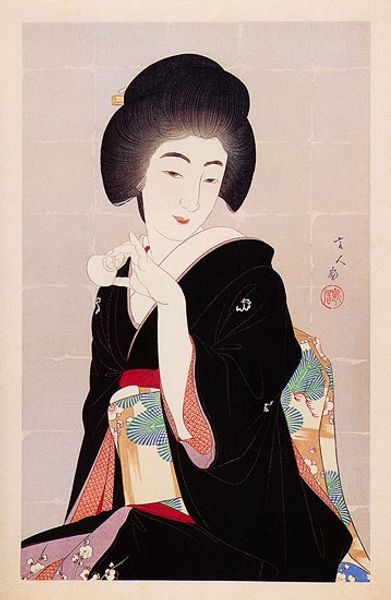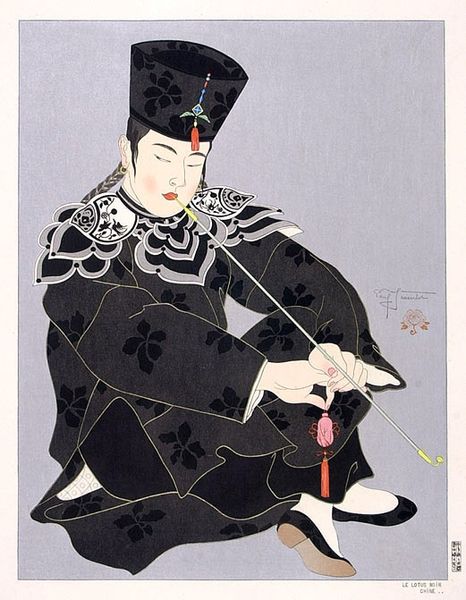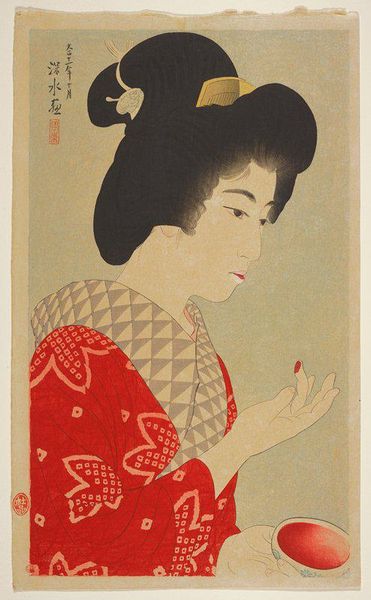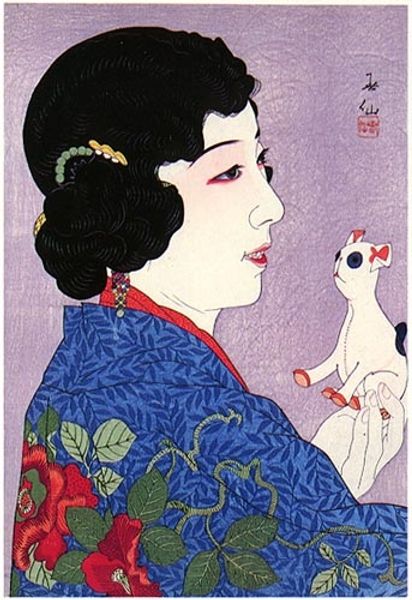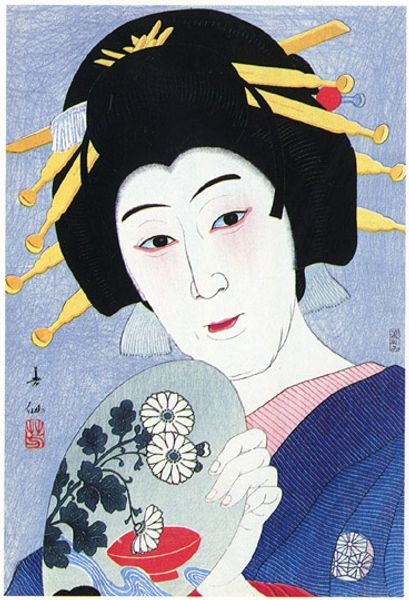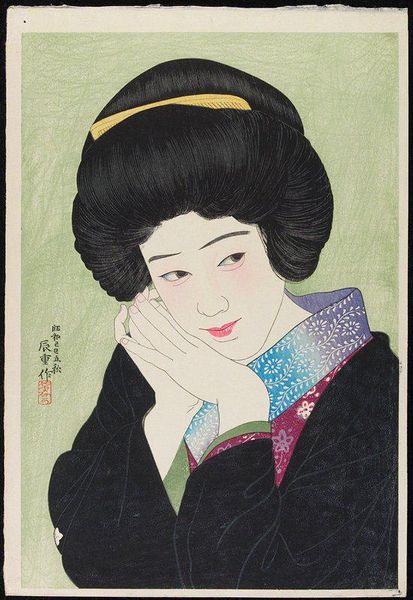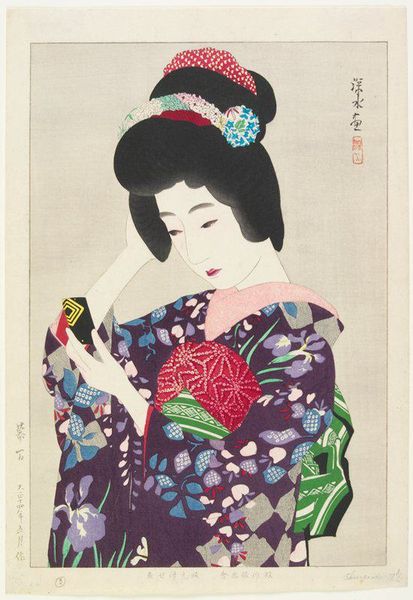
Copyright: Public domain Japan
Curator: Immediately striking is the delicate balance between boldness and grace. Editor: Indeed! Let's explore Paul Jacoulet's "Les Jades. Chinoise," a 1940 woodblock print that presents a woman in traditional garb. Curator: The contrast in textures is key here, wouldn't you agree? Look at how the flatness of her stylized attire—that elaborate headpiece, the stark black fabric—plays against the almost saccharine pink backdrop, brimming with curvilinear patterns. Editor: I'm curious about Jacoulet's positioning as an Orientalist. The choice to use Ukiyo-e techniques to depict this woman speaks to complex interactions between cultural appropriation and appreciation. How does this historical context affect your read of the image? Curator: It’s a pastiche, really. A layering of gazes. Ukiyo-e aesthetics are already loaded with their own societal viewpoints. He's then layering on a Western perception of “China,” which at the time, was enmeshed in narratives surrounding exoticism and political maneuvering. Editor: The very deliberate choice of detail, almost fetishistic, in the jade jewelry and ornamented pipe draws the eye, reinforcing certain stereotypes while also highlighting aspects of wealth and status within a specific social sphere. Curator: Right. Jacoulet isn’t simply documenting; he's curating a very specific performance of "Chinoiserie" for his intended audience. And of course, we have to acknowledge that this image has circulated, has been consumed by very diverse groups of people since then. Its meaning is by no means fixed. Editor: I agree, a close look reveals that "Les Jades. Chinoise" functions on many levels. It is simultaneously a stunning formal arrangement and an artifact steeped in colonial undertones. Curator: Its conflicting aesthetics certainly demand further dialogue about the ethics of representation.
Comments
No comments
Be the first to comment and join the conversation on the ultimate creative platform.
